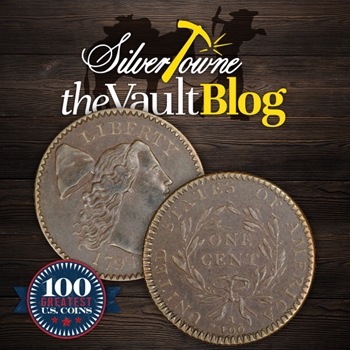
Early United States coinage is known to have some pretty big varieties. It makes sense really as early coinage is a product of trial and error in some instances. That is certainly the case with our next coin in the 100 Greatest United States Coins blog series following Whitman Publishing’s fourth edition. With guidance from author Jeff Garrett alongside Ron Guth, we will take a look at a short lived design that happened to produce one of the most “curious” of coins.
#24 - 1794 “Starred Reverse” Liberty Cap Large Cent
Produced from 1793 to 1796, the Liberty Cap Large Cent series managed to produce what Garrett calls “one of the more curious U.S. coins.” The 1794 “Starred Reverse” features tiny stars hidden in the border decoration on the reverse. This occurred as the engraver of the coin started the die for the back of the coin by stamping a ring of 94 stars along the border (outer edge). This was unheard of (and still is) on any circulation coin for the U.S. except for the pattern quarter dollar of 1792. That border shows 87 stars.
Reasons for borders on coins went back to preventing wear to the lower surfaces of the coins and to help for stacking purposes. It is said that the 1794 “Starred Reverse” occurred out of an unsatisfactory ring of stars used as the border and so the engraver stamped the tooth-like denticles that were meant to hide the stars. Those coins that have survived have significant wear and/or corrosion, although locating a single star on the reverse is said to solidify that it is indeed the “Starred Reverse” variety.
While a number of Large Cent collectors and specialists prefer uncertified coins, this coin is particularly preferred in a holder and it is considered a high cost issue. Less than 100 examples are known to exist in the 1794 “Starred Reverse” variety.
In 1960, this coin was valued at $1,500 for a Very Fine condition. In this latest fourth edition (2015), it is now valued at $2,750.00.







